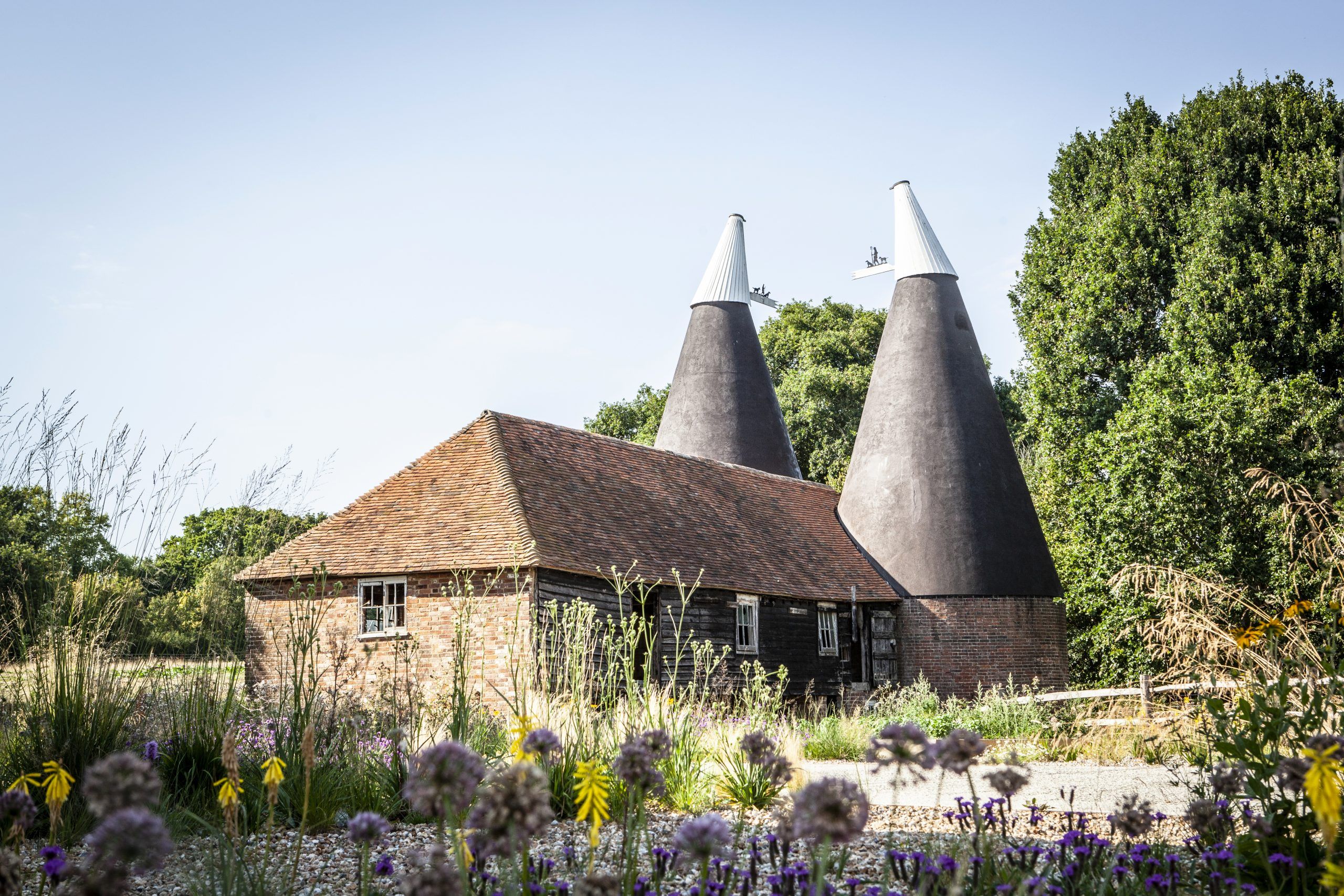Since its establishment in 2017, Tillingham Winery near Rye in East Sussex, has been a hotbed of innovation, bucking convention with its natural, non-intervention, organic and biodynamic wines made from a wide range of varietals, both mainstream and more esoteric, even fermenting some of its wines in earthenware qvevri jars. But far from moving away from this ethos, new broom Salvatore Leone is keen to embrace it.
“Taking risks is what allows us to learn and improve what we do,” he says. “Tillingham keeps experimenting with old techniques applied in a new winemaking world which is not drinking the same wines any more. This means each wine is unique and can be made in different ways and philosophies. Tillingham has some untouched and pure wines, while others are made with modern winemaking techniques to keep their purity. This is all done with the aim of making the best possible wines and pleasing different kinds of palates.”
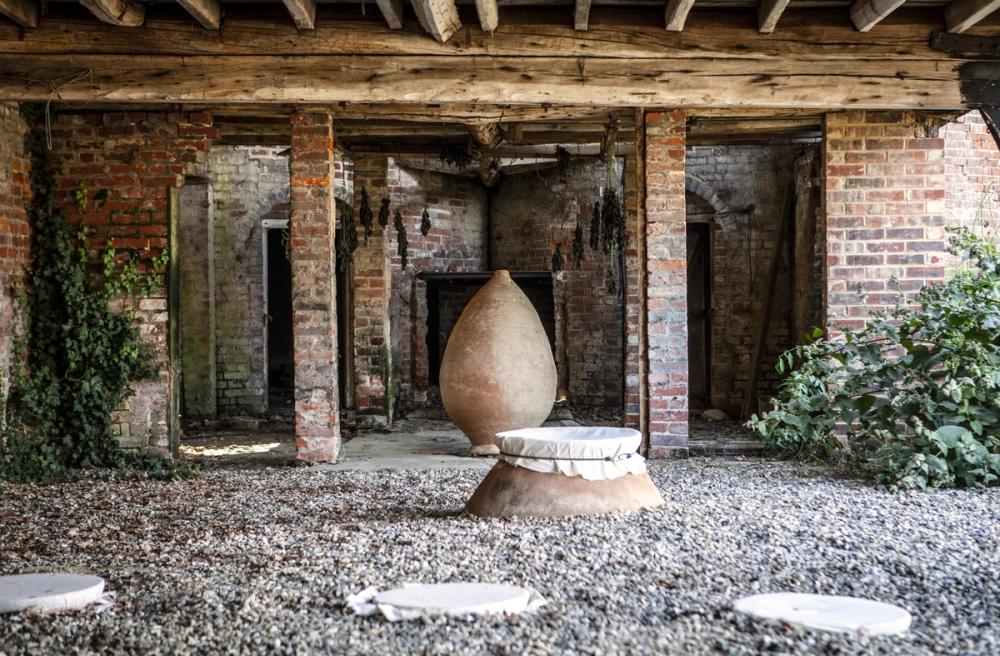
Experimenting and pushing the borders for English wine has always been the USP of Tillingham Winery
Tillingham’s range, which unusually for an English vineyard has always been more heavily weighted towards still (accounting for 60% of production) rather than sparkling, includes its best-selling Col Fondo, made from Auxerrois and Seyval Blanc (though the blend composition of all the wines varies from year to year); as well as a traditional method sparkling made from a 50:50 blend of Pinot Noir and Chardonnay; Endgrain, a white produced from Bacchus, Ortega, and Auxerrois grapes; a rosé made from Pinot Noir and Bacchus; and also a red blend from Dornfleder, Regent, Gamay and Pineau d’Aunis grapes.
The Col Fondo is Tillingham’s best-seller, and what Beames describes as the winery’s “gateway” wine. “Because people are so familiar with English sparkling, our Col Fondo is our version of that, and the starting point. Stylistically it’s quite different, and a nice foot in the door to what we do.”
With the change in direction it may also look to only make a red still Pinot in riper years. Beames explains: “We have also released a red still Pinot every year which not many other English producers do. To do that we have to make it very stylistically different, we are not trying to make a Burgundian Pinot which no one in the UK should be doing.”
Wine tourism
Not only is Tillingham a working winery, but it has enthusiastically embraced wine tourism, receiving a steady flow of visitors particularly in the summer months, when Beames says “the rosé sells by the bucket load”. They are generally a young, hipsterish crowd from Rye, or down from Londoners attracted by the vineyard tours, the on-site restaurant overlooking the vines and serving up seasonal dishes, and the stylish rooms where guests who have overindulged can stay the night. There are even a couple of bell tents pitched in the fields for those who fancy a spot of glamping.
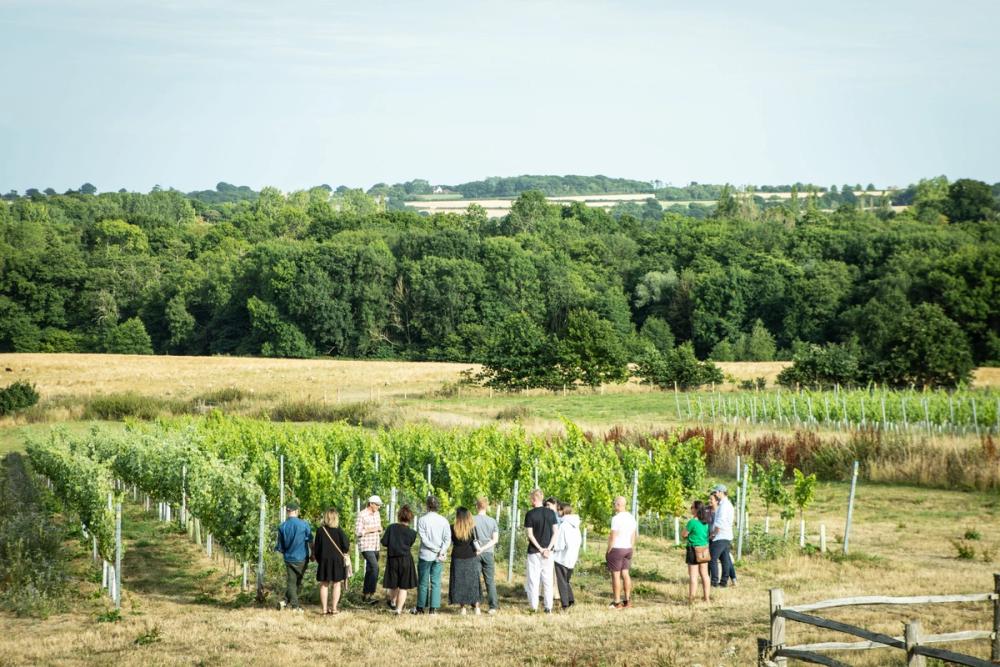
Tillingham has become a key tourism destination for those visting the Rye area in Sussex
But were it not for a chance encounter with the conservationist and local landowner Lord Devonport, who was looking to diversify his land, Tillingham could well have remained a mere pipedream for Walgate who is former chief executive of sparkling producer Kent-based Gusbourne. However, the duo soon agreed to collaborate on establishing an organic and biodynamic vineyard on an old hop farm on the Devonport’s estate near Peasmarsh in East Sussex, united by their shared vision of a fully sustainable, organic and biodynamic winery.
Set amidst 70 acres of ancient woodland and rolling hills, the vineyards were hand planted by Walgate in May 2017, with the first vintage the following year. From the outset, the vineyard employed slow, labour- intensive production methods including the use of Georgian clay urns, or qvevri, and borrowing a neighbouring farmer’s sheep to graze the vineyards. The vineyards were planted over 2018/2019, whilst wine was made from 2017.
Today the vines cover around 25 acres, where up to 21 grape varietals are grown, which Tierney readily admits "might be too many". Dominant varieties are Pinot Noir, which Tillingham has planted in various different plots; Pinot Meunier and Ortega. “We also have two or three rows of Chenin Blanc which has never ripened, and we wonder why we have it. We also do a big chunk of Chardonnay.”
Last year’s yield was around 50 tonnes, while the winery also relied on a further 20 tonnes bought in from local growers, resulting in the production of approximately 60,00 bottles. Of these, 40,000 will be released this year, with the remaining 20,000 being kept in reserve.
Tillingham currently sources its additional fruit from growers in Mersea Island and Crouch Valley in Essex, as well as from nearby Brighton. However, it is aiming to be entirely self-sufficient on the fruit front from this year.
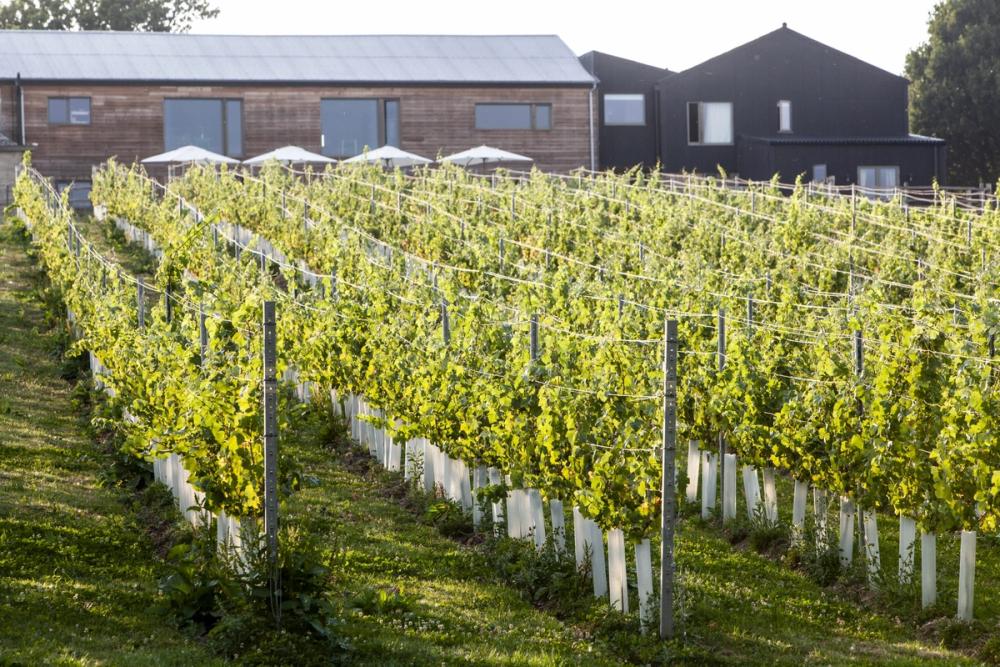
Tillingham hopes to produce all its own grapes for the wines made from the 2024 harvest
“The goal is for us not to have to buy in any fruit this year, but we shall have to see how we go,” muses Tierney.
Streamlining the range
Rationalising the range of varietals produced is now one of the key challenges facing the vineyard. “There were years with Ben when we were making up to 20 wines a year which is a lot to keep on top of,” says Beames.
That has now been slimmed down to around 14 wines in 2023, with the goal of nine or 10 wines in 2024. Leone explains: “The aim is to streamline the current range in order to focus efforts on those grapes which are proving to be most successful. This will enable us to concentrate on those which can be produced with a more consistently high quality.”
Change of distributor
From the outset Tillingham has worked closely with Guildford-based Les Caves de Pyrenes as its key distributor, but following Walgate’s departure it was decided that a clean break was the most sensible move. “Ben is still working with Les Caves de Pyrenes who are distributing his wines, so it didn’t make sense for our wines to be there alongside his,” says Tierney. And so the search commenced for a new distributor who would support and help the young winery achieve its ambitious targets.
Welcome Wanderlust
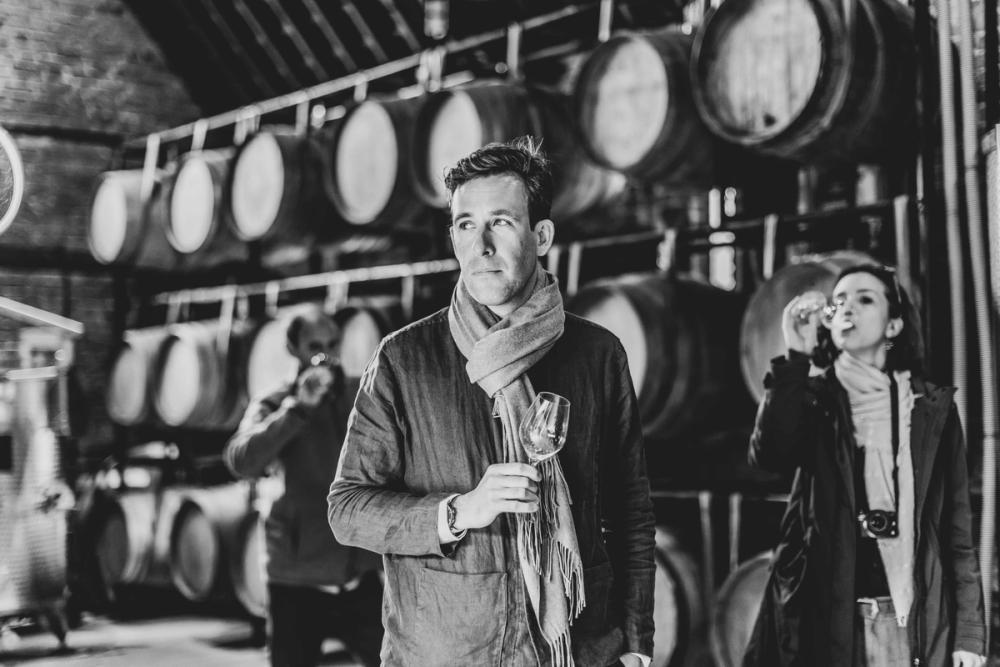
The Tillingham team have been impressed by the approach of Richard Ellison and the Wanderlust Wine team
A beauty parade ensued, in which Beames met with various potential candidates, but in the end there was one standout, Wanderlust Wine, owned and founded by Richard Ellison. Keen to work with a distributor who would support and help the winery achieve its ambitious targets, Wanderlust was the natural successor.
“We were talking to several people and it was a process of going through what was most important to us - which is volume, reach and ambition.”
This year Tillingham is aiming to send out 40,000 bottles to market, almost double the volume which it has put out in previous years, which Beames admits is “an ambitious jump”, but liked the fact that Wanderlust wasn’t phased by this.
“Richard made us feel very confident we were in safe hands, and rather than just talking about the wine, already had accounts in mind who would be interested in taking our wines – he just knew where to place us which was reassuring. From a business perspective it just made a lot of sense."
The nature of Wanderlust’s portfolio also meant that it was a “natural fit” for Tillingham’s wines, claims Beames, adding they make a “nice point of different in style and approach even down to the labels”.
New winemaker

Salvatore Leone has extensive experience of working for wineries all over the world and has been making wine in England for a number of years
Leone, who hails from a Sicilian family steeped in the wine world, has travelled the globe as winemaker for over 22 years, and has worked with 35 vintages across seven countries in both the northern and southern hemispheres, including Spain, Australia, New Zealand and Argentina.
His winemaking philosophy, he says,varies according to the ethos of the place he is working.
“In general, it is to make the best possible wines according to the conditions, and to express the best aspects of each terroir and minimise the impact of any unwanted elements while being as sustainable as possible for the environment.”
Describing himself as a “technician”, he says he tries to “observe, learn, advise and apply techniques to enhance the best part of each batch of grapes”.
While he has worked with some of the world’s biggest producers, including Constellation Wines, Pernod Ricard and Bodega Familia Zuccardi, Leone claims his real passion is working with smaller producers such as Tillingham, with 2023 being his first vintage.

The Tillinghm property also includes a farm
“My first love are the small wineries where it is possible to touch by hand every single step of the process. The beauty of working in the UK is the very small scale of production, while being very young in the industry with so much to experiment and learn. No rigid formulas are applied, and we all have the opportunity to learn from a challenging environment while leaving our fingerprints on the wines.”
As a consultant winemaker, Leone has worked with seven other English wineries, which gives him what he believes a unique perspective into what makes Tillingham a little bit different.
“I work with a few wineries simultaneously and this makes what I do very exciting because every place has its own unique identity and terroir,” he says.
“The English wine industry is still very young and it’s just great to be part of the process. It’s difficult to generalise as many improvements have been made in the past 10 years and a few aspects are still works in progress. What makes Tillingham unique, I believe, is that the winemaking applied to the grapes gives a real sense of place and a feel of the land.”
Climactic challenges
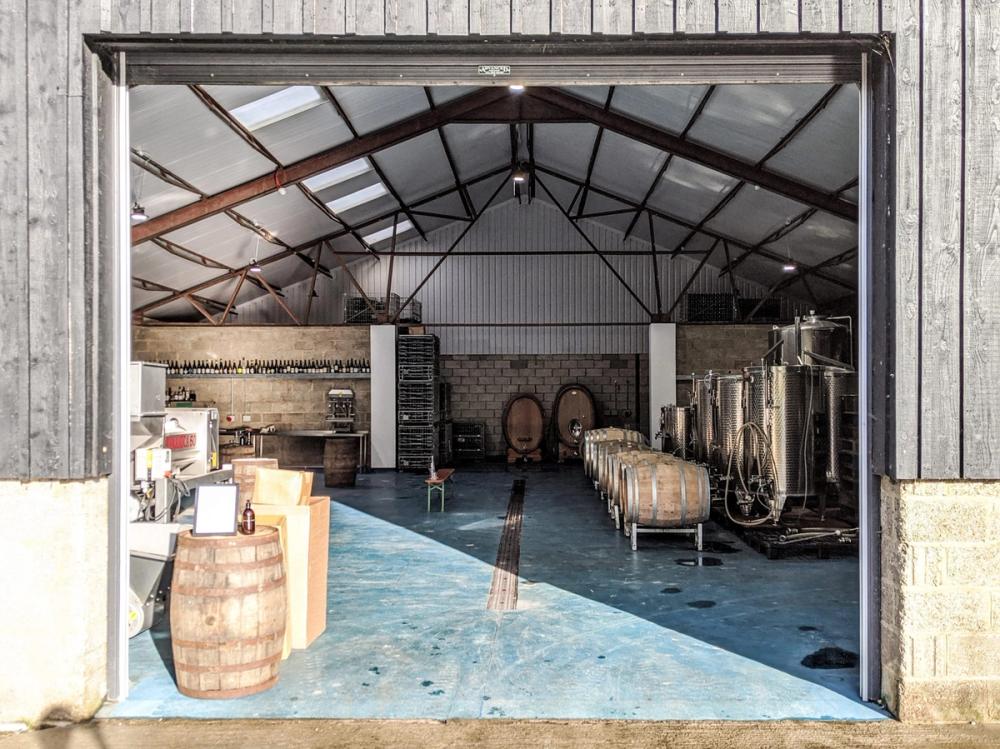
The winery at Tillingham
Like all English vineyards, Tillingham is at the mercy of the wildly variable climate, which proves to be an ongoing challenge. More fortunate than some, the site is well positioned with vineyards being both south facing and well ventilated, reducing the risk of mildew, though as Tierney observes, “obviously in the UK it’s still damp and humid, and mildew is always a challenge”.
Certain areas are more vulnerable, but “it’s all about keeping on top of spraying to eliminate that. I’d say it’s got progressively better, and we are learning from our experience in recent years”.
“I’ve been here for four vintages, and all of them have been vastly different,” he continues. “We’ve had late frosts and early summers, and last year a wet summer with really changeable conditions.
This year budburst occurred two to three weeks earlier than usual, so this was fraught with risk given the very real possibility of a late frost nipping the fledgling buds. However, according to Leone, things in the vineyard are currently set fair with things currently “looking good” though at the time of speaking much of the UK was in the grip of an unseasonably cold and wet early summer, and he was holding out for warmer temperatures and not too much rain, enabling the crop to yield somewhere in the region of last year’s 50 tonnes.
“The vineyards are still young and if the conditions are favourable, the production should increase in the next couple of years, giving us more winemaking options.”
Organic and biodynamic
The vineyard has been working on organic and biodynamic principles “from day one”, though certification is only two years in, with full certification coming in 2026.
“We now take a classic organic approach, with no cover cropping and still work with the farmer next door, borrowing his sheep to graze the vineyards over winter, and using his cow manure mixed with hay, straw and skin pressings to make compost,” explains Beames. “We are still spraying copper sulphate within what is permitted, but are happy to go as high as we are allowed if it means we save the crop.”
Eyeing up overseas markets
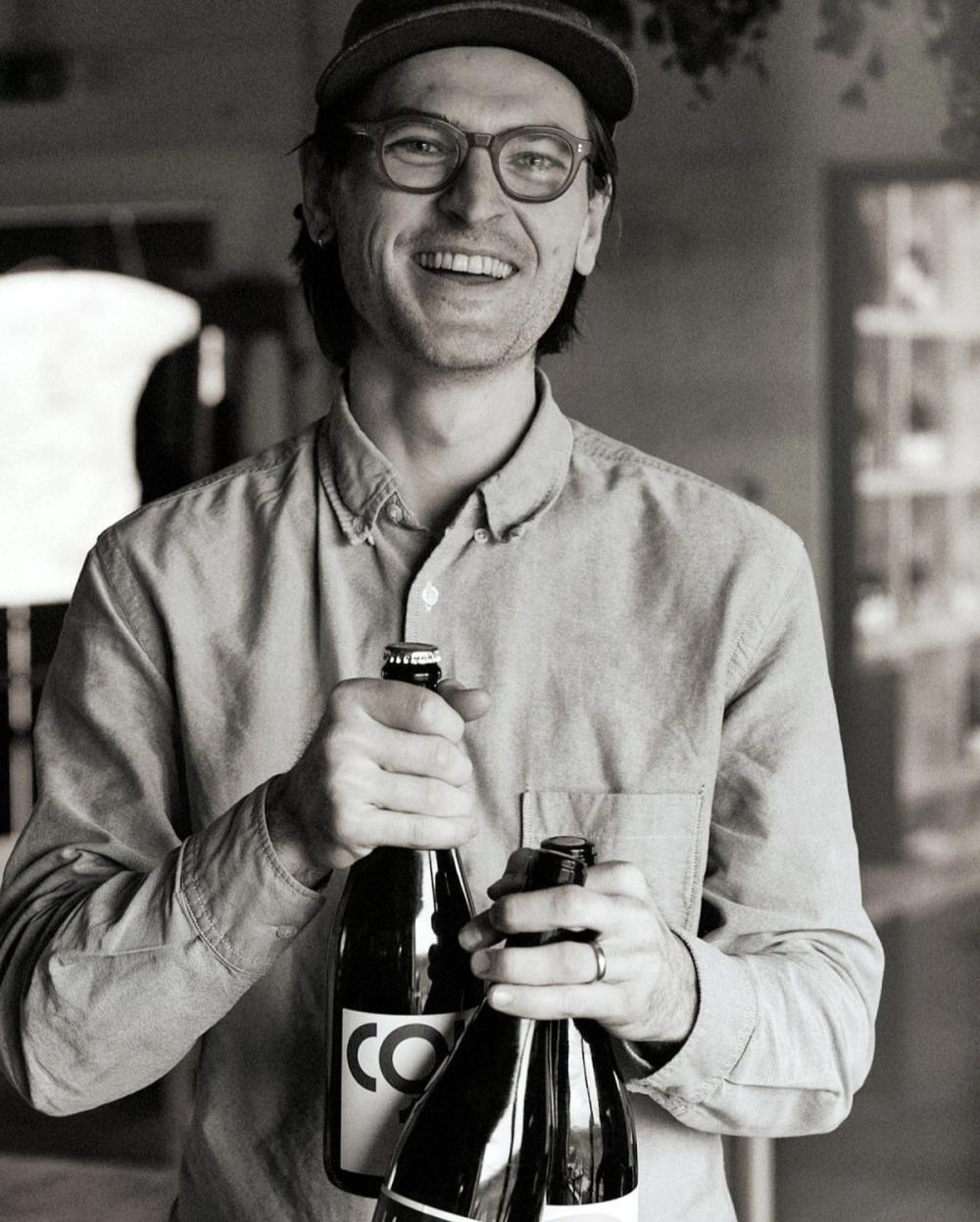
Tillingham's Tierney Beames says there is still big potential to grow UK sales as well as export
While Tillingham’s production is still small, that hasn’t stopped the winery eyeing up overseas markets, sending small shipments of its wines to Sweden, Denmark, Norway, Japan and Australia on a somewhat ad hoc basis. This is something that Beames says the business may well revisit in the future, though is not an immediate priority.
“We lost a lot of fruit in 2021 which was an all- round disaster for us, so we simply didn’t have the volume of wine to ship. We lost around 60% of our production and had to buy in a lot of fruit, so that probably put us two years backwards in our plan.”
Despite export ambitions, Beames doesn’t believe the domestic market in the UK has reached anywhere near saturation point, and there remains much unexploited potential. However, he says there is a definite shift towards still wine rather than just sparkling for which English wine is better known. “The quality of our still wines is improving all the time, he claims.
He concedes that a big challenge for both Tillingham and the overall English wine market is the hefty price of the wines, though points to a growing band of aficionados who are prepared to splash out that bit more for a quality product.
“Our wines certainly aren’t cheap, and at around £26 a bottle that’s not an amount many people would spend on a mid-week bottle. I do believe, though, that there is a growing number of consumers who are prepared to spend that bit more.That is the direction in which the industry is headed.”
Looking to the future
As to the long term, Leone says his plans are all about refining the winemaking techniques and improving the wines. “However, this will take years, and is greatly influenced by the climate dictating what is possible to make and what is not. The initial step is to learn more from the vineyard and focus on the areas and the varieties which have the potential to make the best wines.”
Planting more vines is another possibility that is currently being mooted.
“Hitting 40,000 bottles was a big thing for us and feels like it is manageable and sustainable and a good volume for us to be at for the next three years or so. Beyond that, we can’t get much bigger without either continuing to buy in a chunk of fruit or planting more,” says Beames.
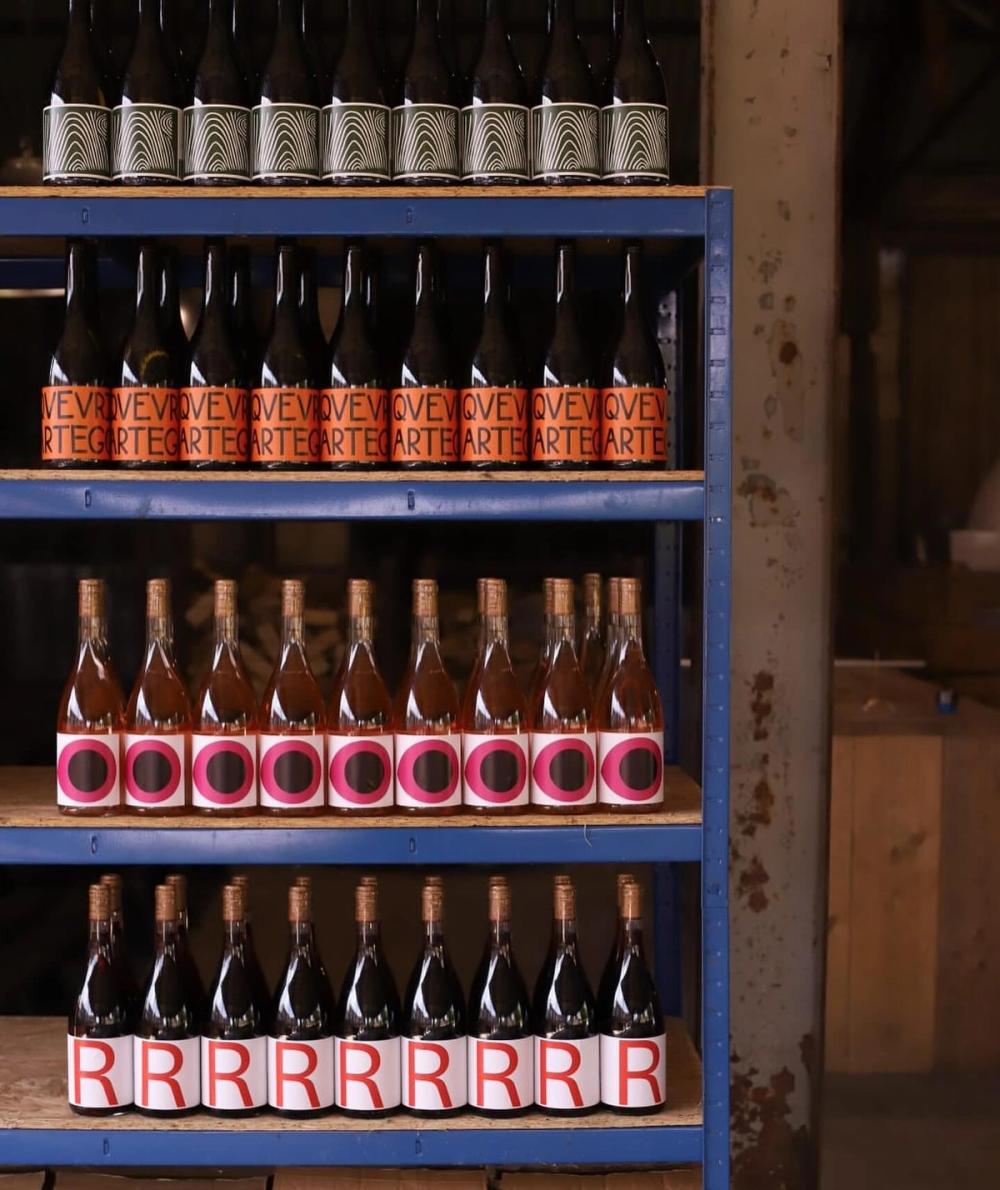
Tillingham has rationalised its range to concentrate on the quality of its wines
A potential plot has already been earmarked, which would provide the vineyard with an additional 15 acres, but as Beames points out, there would be at least a three-year period before there would be any return from that. “First, we need to establish where we are, with our current 40,000 bottles, and what demand is like for which styles. This is our opportunity to get a bit more specific in the range.”
If the decision is taken to increase the plantings, then that would be in response to demand. “Choosing the varieties is a big decision and we need to factor in not just demand, but what the climate is likely to be like in 20 years from now.”
Challenges ahead
Key future challenges facing the winery, according to Beames include managing the hugely unpredictable climate and the seeming shift in the seasons.
“The right seasons don’t come at the right time anymore, it’s extraordinary the changes we’ve seen in recent years, with 2022 seeing some of the hottest temperatures in every part of the country. Some of the growers we work with are having to irrigate their vineyards which is not something we’ve had to think about before.”
Other than the climate, Leone says one of the biggest tasks in the vineyard is to better understand the different batches of grapes according to the diversity which emerge in each vintage, and to treat them accordingly to bring out their best expression. As part of that process, last winter the vineyard drew some soil to analyse the mineral make up of each individual plot, providing vital data as to which grapes would best be suited to each area. “As a result we started to use lime to fix the soil PH, and to return it to a perfect, healthy soil balance.”
Tillingham on the Thames 2023 Vintage Launch
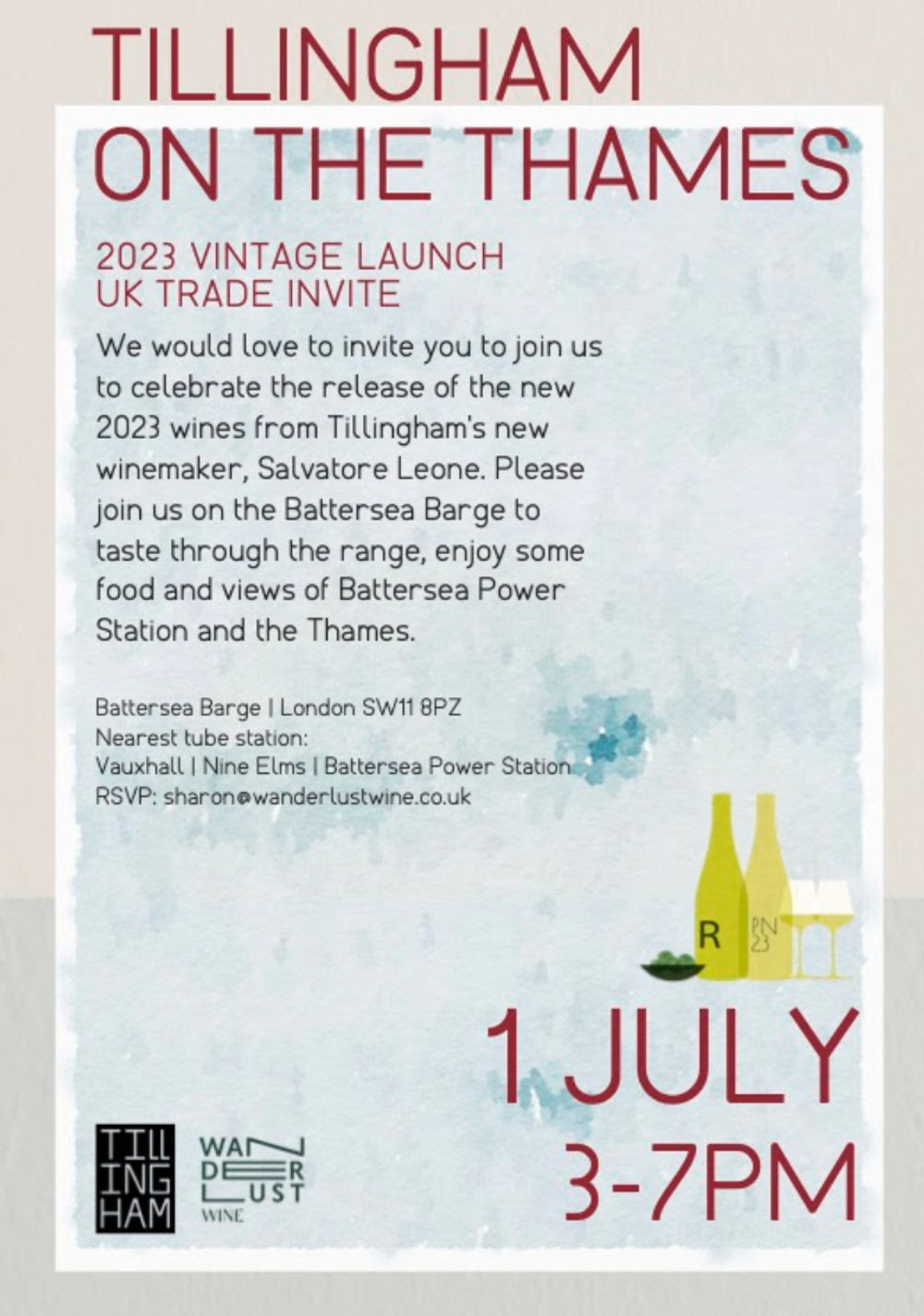
July 1. 3pm-7pm. Battersea Barge, London SW11 8PZ
You can taste and celebrate the release of the new 2023 wines and meet the Tillingham team, in partnership with UK wine importer, Wanderlust Wine at its London tasting on Battersea Barge on July 1.
To attend please RSVP to sharon@wanderlustwine.co.uk.
